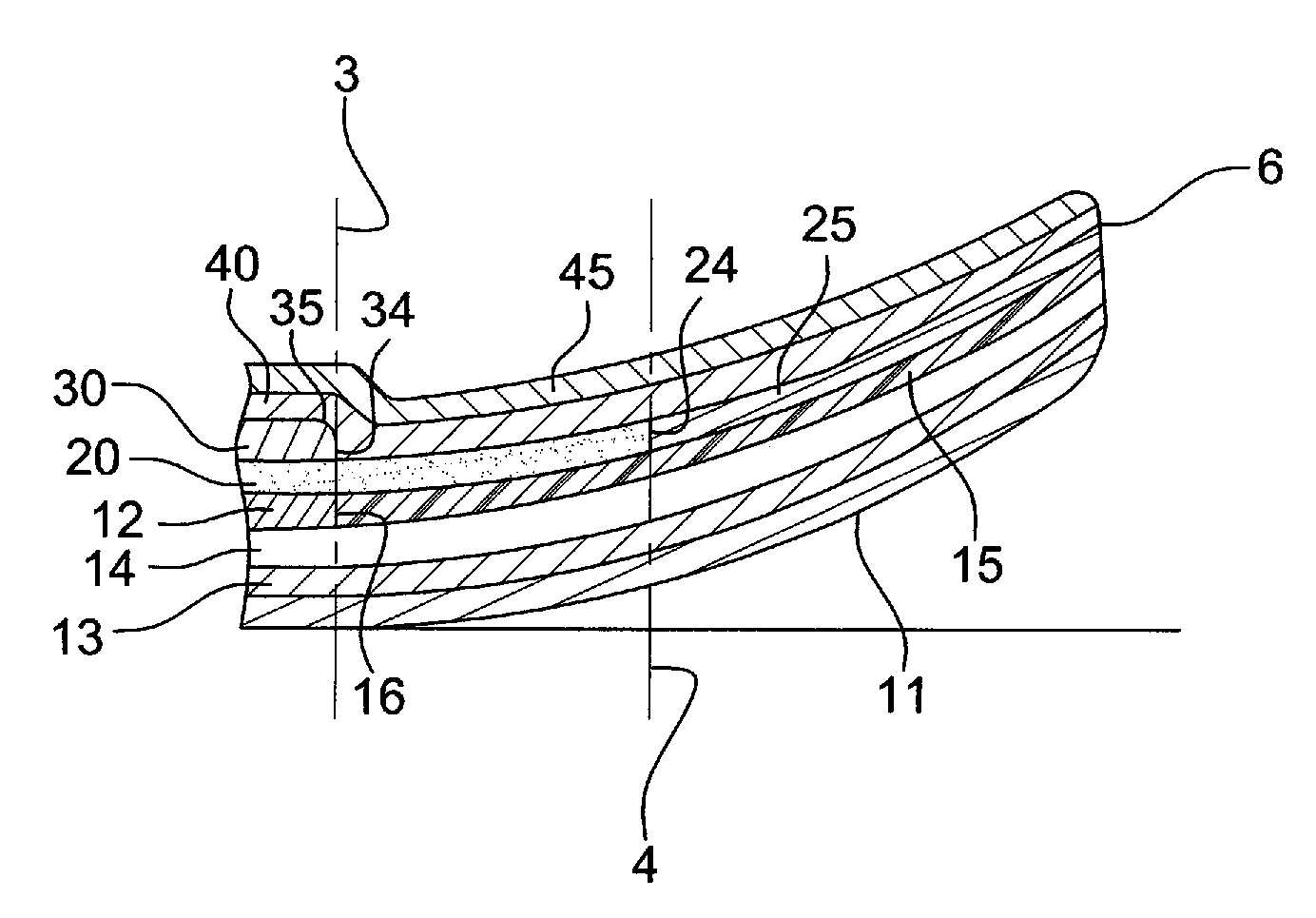Slide board for use on snow
a technology for slide boards and snow, which is applied in the direction of skis, sport apparatus, skates, etc., can solve the problems of negative consequences on the behavior of the board, the effect of reducing the overall cross-section and enhancing the effect of improvemen
- Summary
- Abstract
- Description
- Claims
- Application Information
AI Technical Summary
Benefits of technology
Problems solved by technology
Method used
Image
Examples
Embodiment Construction
[0040]As already mentioned, the invention relates to the family of slide boards and more particularly downhill skis which have a tip and / or a heel of large surface area. To be more precise, and as shown in FIG. 1, the ski 1 has a tip 2 defined forward from the front contact line 3, the ski being set flat. Forward from this front contact line 3, the tip 2 has a width which is maximum at the so-called “maximum width” line 4.
[0041]Symmetrically, although in different proportions as regards the dimensions, the board upturn at the rear of the ski, namely the heel 7, is defined to the rear of the rear contact line 8. It may have a maximum width line 9 also located to the rear of the rear contact line 8.
[0042]To be more precise, and in an embodiment example shown in FIG. 3, the tip 2 is implemented by assembling the following layers.
[0043]First of all, the sole 11 forms the lower layer, which comes into direct contact with the snow. The board also includes a core 12, which may be a pre-mac...
PUM
 Login to View More
Login to View More Abstract
Description
Claims
Application Information
 Login to View More
Login to View More - R&D
- Intellectual Property
- Life Sciences
- Materials
- Tech Scout
- Unparalleled Data Quality
- Higher Quality Content
- 60% Fewer Hallucinations
Browse by: Latest US Patents, China's latest patents, Technical Efficacy Thesaurus, Application Domain, Technology Topic, Popular Technical Reports.
© 2025 PatSnap. All rights reserved.Legal|Privacy policy|Modern Slavery Act Transparency Statement|Sitemap|About US| Contact US: help@patsnap.com



